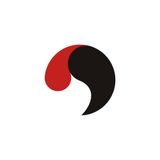What is a DAOstack DAO and how does it work?

TL;DR: DAOstack DAOs are decentralized organizations built on the DAOstack platform, which provides a modular, scalable, and user-friendly framework for decentralized governance, collaboration, and decision-making.
Decentralized autonomous organizations (DAOs) have gained significant attention in the blockchain and cryptocurrency ecosystem. DAOstack is a platform that provides a modular, scalable, and user-friendly framework for creating and managing DAOs. In this article, we will explore the concept of a DAOstack DAO, its features, and some real-world examples.
What is DAOstack?
DAOstack is an open-source platform built on the Ethereum blockchain, designed specifically for creating and managing DAOs. It offers a powerful suite of smart contracts and developer tools that enable the creation of scalable and customizable decentralized governance systems. DAOstack's core components include the Arc framework, the ArcHives protocol for decentralized data storage, and Alchemy, a user interface for managing DAOs. If you are new to the world of DAOs, you can read more about them here.
Key Features of DAOstack DAOs
- Modularity: DAOstack's Arc framework provides a set of modular smart contracts that can be combined and customized to create a unique governance system for each DAO.
- Scalability: DAOstack is designed for large-scale collaboration, with the ability to handle thousands of participants and complex decision-making processes.
- Upgradability: DAOs built on DAOstack can be upgraded over time to incorporate new features and improvements.
- Interoperability: DAOstack's architecture supports integration with other blockchain platforms and technologies, such as decentralized finance (DeFi) protocols, NFTs, and more.
- User-friendly Interface: Alchemy, DAOstack's native user interface, makes it easy for participants to interact with and manage DAOs.
Examples of DAOstack DAOs
DAOstack has been used to create various DAOs with different use cases, including investment, funding public goods, and decentralized collaboration. Here are a few examples:
- Genesis DAO: One of the first DAOs built on DAOstack, Genesis DAO focuses on funding blockchain projects that align with its values and goals.
- dHack: A hackathon DAO that allows participants to collaborate on projects and receive funding based on community votes.
- KyberDAO: A DAO for the Kyber Network, a decentralized exchange protocol, that enables token holders to participate in governance decisions.
- EthicHub: A DAO dedicated to providing decentralized peer-to-peer lending for small farmers in developing countries.
- PolkaDAO: A DAO supporting the development of projects and tools within the Polkadot ecosystem.
Getting Started with DAOstack
To create your own DAOstack DAO, follow these steps:
- Familiarize yourself with the concept of DAOs by reading resources like this comprehensive list of DAOs and this guide on creating a DAO.
- Explore the DAOstack documentation to understand the platform's architecture, components, and developer tools.
- Research and apply various funding mechanisms, such as quadratic funding, to support your DAO's objectives.
- Engage with the DAOstack community through forums, social media channels, and events to learn from other DAO creators and enthusiasts.
- Test your DAO's smart contracts and governance mechanisms on a testnet before deploying to the Ethereum mainnet to ensure security and functionality.
- Launch your DAO and begin onboarding members, establishing your organization's values, goals, and decision-making processes.
- Monitor your DAO's progress, learn from challenges, and iterate on your governance model to improve effectiveness and user engagement.
- Stay informed about developments in the blockchain and DAO space by following industry news, events, and updates from platforms like daotimes.com.
Conclusion
DAOstack offers a powerful and flexible framework for creating and managing decentralized autonomous organizations. Its modular, scalable, and user-friendly design makes it an ideal choice for those looking to build DAOs with diverse use cases and governance structures. By understanding how DAOstack works and learning from existing examples, you can create a successful DAO that empowers its members and achieves its objectives. Stay connected with the DAO ecosystem by following the latest news and updates on daotimes.com.





